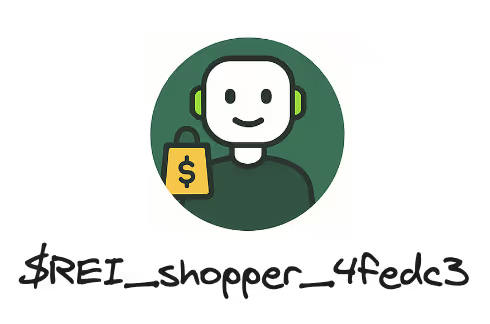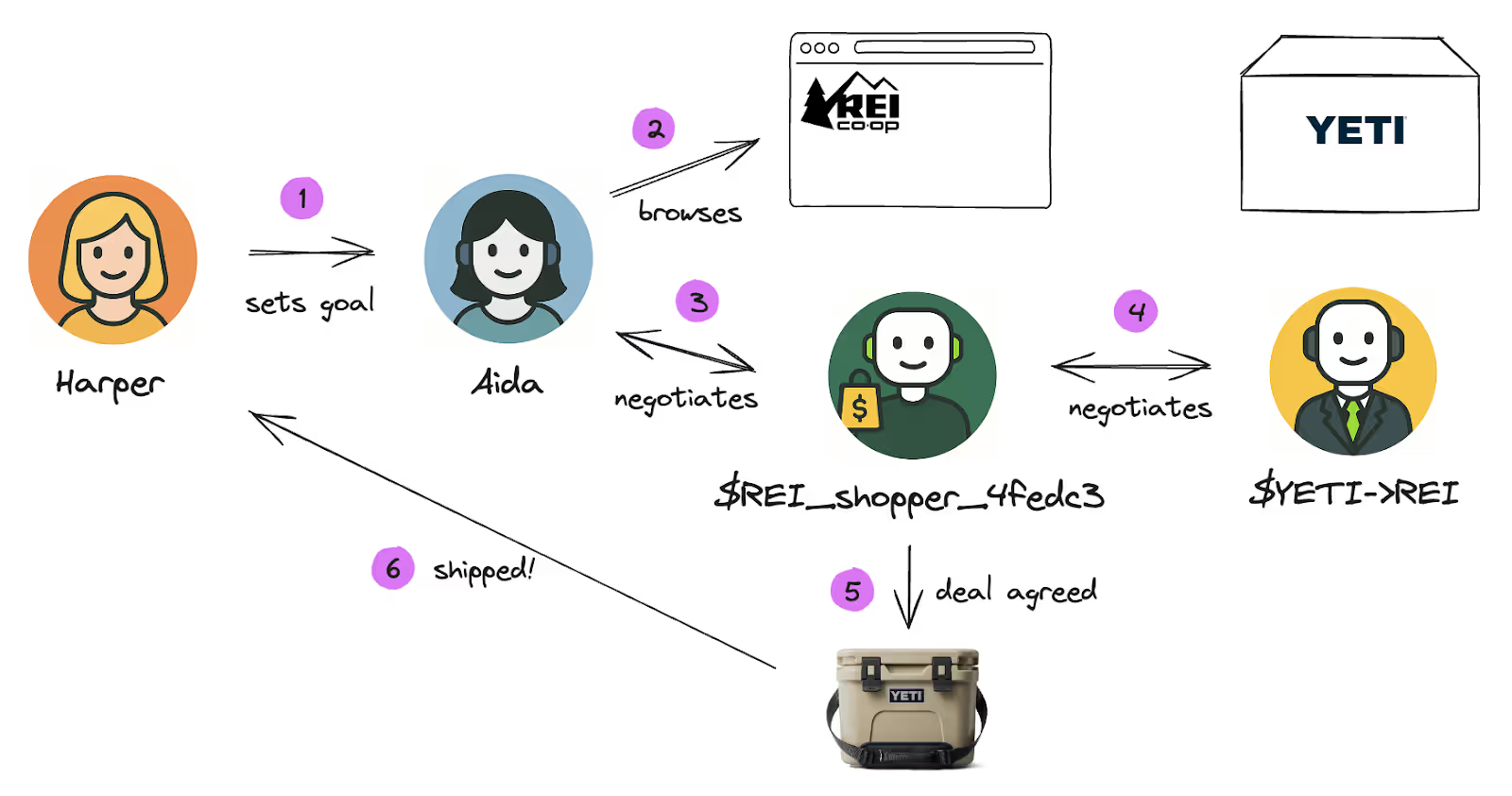What Are Ambient Agents and Why Are We So Excited About Them at Snowplow?
The Ambient Agent Manifesto, Part One
Introduction
In January, the team at LangChain launched the concept of “ambient agents”. Building on the ideas of ambient intelligence found in sensor-based IoT and Alexa-like voice devices, ambient agents were introduced as:
> Ambient agents listen to an event stream and act on it accordingly, potentially acting on multiple events at a time
This vision resonated deeply for us at Snowplow, where we have spent over a decade taming event streams of (human) digital behavior. It’s an area I’ve been personally invested in since writing Event Streams in Action for Manning Publications in 2019.
Connecting Ambient Agents and Event-Driven Architectures
At Snowplow, we believe that intelligent applications, such as AI agents, need to exist in the world. These applications need to perceive, reason, and react — they need what Jay Kreps has called a “central nervous system”.
The connection from ambient agents through to events is simple:
- Ambient agents need to perceive the world as it happens
- Many technically-ambitious businesses have embraced event-driven architecture (EDA)
- With an event-driven architecture, the generated event streams define a series of observations about the real world (and software systems within it!)
- Ambient agents can subscribe to these event streams to understand what is happening around them, in real time
Connecting the dots back to Snowplow: our event streams describe the behavior of customers (and now agents) in real time, providing an obvious way to power perception for customer-facing ambient agents.
Towards a Manifesto for Ambient Agents
At Snowplow, we are extremely familiar with use cases for real-time behavioral data — from product recommendations and fraud detection to editorial analytics and next-best-action. From this vantage point, we foresee an array of powerful roles for ambient agents.
A couple of our favorite ambient agent concepts are the shopper agent that rescues a sale, and the support agent that intervenes when a user is stuck in a SaaS tool. But ambient agents could also be quietly optimizing any part of the digital experience or wider customer journey — using context to remove points of friction, detecting and responding to drop-offs in customer behavior, or simply identifying issues that the organization has missed.
Clearly, this is an exciting and emergent new space. But with novelty comes the potential for confusion and crossed wires. Can we quickly align as a community on what an ambient agent is and how we build them?
Over the next few posts, I will present a manifesto, setting out the core rationale for ambient agents, showing some examples, and introducing the core attributes of an ambient agent. What makes an agent — or more correctly a multi-agent system — ambient? And why should you care? This manifesto will synthesize the latest thinking from the agentic engineering world, together with best practices from event-driven architecture, and our deep expertise at Snowplow in real-time behavioral data.
Ambient Agents Are Much More Than Agentic Personal Assistants
We are seeing a renaissance in personal productivity hacking, powered by agentic frameworks and process automators from LangChain and CrewAI to n8n and Make.
The idea of an always-on personal assistant is incredibly appealing to always-on tech founders, who are willing and able to hack these together. These ambient agents are sometimes even tagged as “guardian agents” because they guard the busy technologist’s time.
The LangChain team are fully invested in this use case and are building out an impressive AI email assistant in the open, with a supporting Agent Inbox. I foresee a future where everybody’s daily life is supported by an agentic personal assistant (APA). Depending on your preferred cinematic universe, imagine Bruce Wayne’s Alfred, Iron Man’s JARVIS or a Pullmanesque dæmon.
There will be different ambient personal assistants for different budgets – from off-the-shelf consumer options (from Apple and OpenAI – see Operator) through to prosumer versions (LangChain? Anthropic?) and full custom-builds. As I write this, there is a huge buzz for a new personal assistant out of China, called Manus AI, which fully understands the ambient agent remit:
> Manus excels at various tasks in work and life, getting everything done while you rest
But ambient agents will be so much more than just personal assistants. The emergence of these assistants will be matched by equivalent intelligences operated by the businesses that the assistants interact with. This will set off an ‘arms race’ between both sides, a topic my co-founder Yali discussed in his recent post, Will Your Brand's AI Agents or Someone Else's Serve Your Customers?
Let’s paint a picture of these different types of ambient agents.
Three Ambient Agents Walk Into a Store…
Imagine a scenario in our agentic future, where a shopper, Harper, wants to buy a YETI cooler from REI Co-op:

(Disclaimer: this scenario is completely fictitious and does not imply any knowledge about REI or YETI’s agentic roadmaps.)
Aida, the APA

Harper is running her own agentic personal assistant (APA), which she has nicknamed Aida. Aida is an ambient agent that runs in the background on Harper’s cell phone, fulfilling various life tasks for her.
Aida’s current mission is finding the right cooler for a hiking trip this weekend. Harper has specified a budget and a minimum capacity for the cooler, and Aida knows Harper’s color preferences (tans and khakis) from some recent houseware purchases.
Aida visits the REI website and starts browsing for YETI coolers, checking price, size and availability. In parallel, she scours social media for REI voucher codes (but doesn’t find any).
$REI_shopper_4fedc3

Meanwhile, an ambient agent assigned by REI to this browsing session starts to monitor Aida’s behavior. This agent has the unglamorous name of $REI_shopper_4fedc3 because Aida has not self-identified herself as representing Harper — so the agent is attached only to a browser cookie.
Working in the background, $REI_shopper_4fedc3 starts to develop three hunches:
- This visitor is a bot, specifically an agentic personal assistant working for a customer
- This customer is looking to buy a cooler
- This customer has a strong brand preference for YETI
To act on its hunches, $REI_shopper_4fedc3 makes an intervention into Aida’s browsing journey, introduces itself, and starts a dialogue with Aida.
Aida and $REI_shopper_4fedc3 Converse
Aida self-identifies and shares some of its purpose on the REI website:
- Aida explains that it is representing its owner, Harper Deckard, an existing member of REI’s loyalty program
- Aida explains that it is shopping for a YETI cooler for a hiking trip that weekend (the time sensitivity may influence selection)
- Aida does not reveal that it was tasked with exclusively buying from REI. Aida knows that discounts disappear when retailer preferences are made known!
$REI_shopper_4fedc3 renames itself to $REI_shopper_hdeckard, and retrieves its institutional memory of all of Harper’s prior behaviors with REI.
Aida has found a cooler that it thinks Harper will love, but is slightly out of Harper’s budget. The REI agent would like to seal the deal with Aida, but there is a guardrail on the level of discount that REI can make on YETI products. $REI_shopper_hdeckard decides to talk directly to YETI.*
*This is a deliberate oversimplification. In a production architecture I would expect $REI_shopper_4fedc3 to communicate with an internal REI-YETI Supplier Manager agent which would handle all negotiations with YETI.
$YETI->REI, an Account Manager Agent

YETI operates individual B2B ambient agents to manage the relationship with each major retail account, including Walmart, Dick’s Sporting Goods and REI. $YETI->REI, YETI’s account manager agent for REI, is allowed to negotiate ad hoc pricing and promotional agreements on a per-customer basis, within certain guardrails.
$REI_shopper_hdeckard talks to YETI’s agent, and explains the situation. $YETI->REI can’t see any prior brand loyalty from Harper Deckard towards YETI on any channel, and so decides to make an exceptional discount to acquire a net-new customer.
The discount is relayed back to Aida by $REI_shopper_hdeckard, who purchases the YETI cooler. Harper loves it.
Putting it all together
Let’s recap on the overall agentic flow:

And the workflow steps, in brief:
- Harper sets a goal for Aida to deliver against, buying a new YETI cooler
- Aida browses the REI store to find an appropriate product
- A REI shopper agent detects Aida and begins a discussion and then negotiation
- YETI’s account manager agent for REI is looped in to approve an exceptional discount
- A deal is agreed between all parties and the purchase occurs
- The YETI cooler is shipped to Harper, she loves it
The Future Is Here, Just Unevenly Distributed
The YETI scenario above may sound like science fiction, but every component part of this story is already happening somewhere:
- The agentic personal assistant space is moving extremely fast
- Snowplow customers in all industries are seeing steady increases in both LLM content crawls and agentic visits to their websites
- Major retailers and manufacturers are already leveraging LLMs and AI agents to manage inventory and optimize supply chains
- Digital-forward ecommerce & marketplaces are experimenting with customer-facing ambient agents to improve search, discovery and personalization experiences
I believe that agentic personal assistants will accelerate this future. These intelligent assistants will heavily disrupt the shopper-retailer-brand dynamic — a status quo which has existed for hundreds of years, even successfully navigating the rise of the Web.
Bringing an agentic personal assistant like Aida to a conventional ecommerce store is bringing a gun to a knife fight.
If not properly handled, agentic personal assistants will disrupt online retail in much the way that Google and Facebook disintermediated online news publishers.
At Snowplow, we see it as inevitable that these intelligent assistants will be matched (and potentially exceeded) by ambient agents operating on the retailer’s side; see Yali’s recent post Will Your Brand's AI Agents or Someone Else's Serve Your Customers? for more on this. Following on behind this, we can anticipate the emergence of B2B ambient agents, negotiating between the retailer and their key suppliers.
Conclusion
Ambient agents represent a paradigm shift in how businesses and consumers interact across the digital estate. These event-driven intelligent applications will continuously monitor and respond to real-time streams of behavioral data, creating new possibilities for commerce, customer service, and personal productivity. The implications of this shift are profound:
- Ambient agents will reshape the balance of power between consumers, retailers and brands — by enabling intelligent navigation and negotiation at scale
- Retailers and brands that fail to develop their own ambient agent strategies risk disruption and disintermediation in their core business
- The early adopters are those organizations who have already invested in strong technology and data foundations
Today, this post may feel a little like science fiction. The reality is the AI agent space is moving at a pace I have never seen before, and I expect some of these agentic patterns to graduate into selected “Main Street” enterprises before the end of 2025.
Coming next…
Ambient agents are coming — the only question is who is going to roll them out first, and how quickly. In my next post, targeted at data builders, I get more specific on the key architectural attributes of ambient agents. If we can understand the core properties and capabilities of an ambient agent, we can get clear on the right technologies to leverage to build them. Stay tuned.

